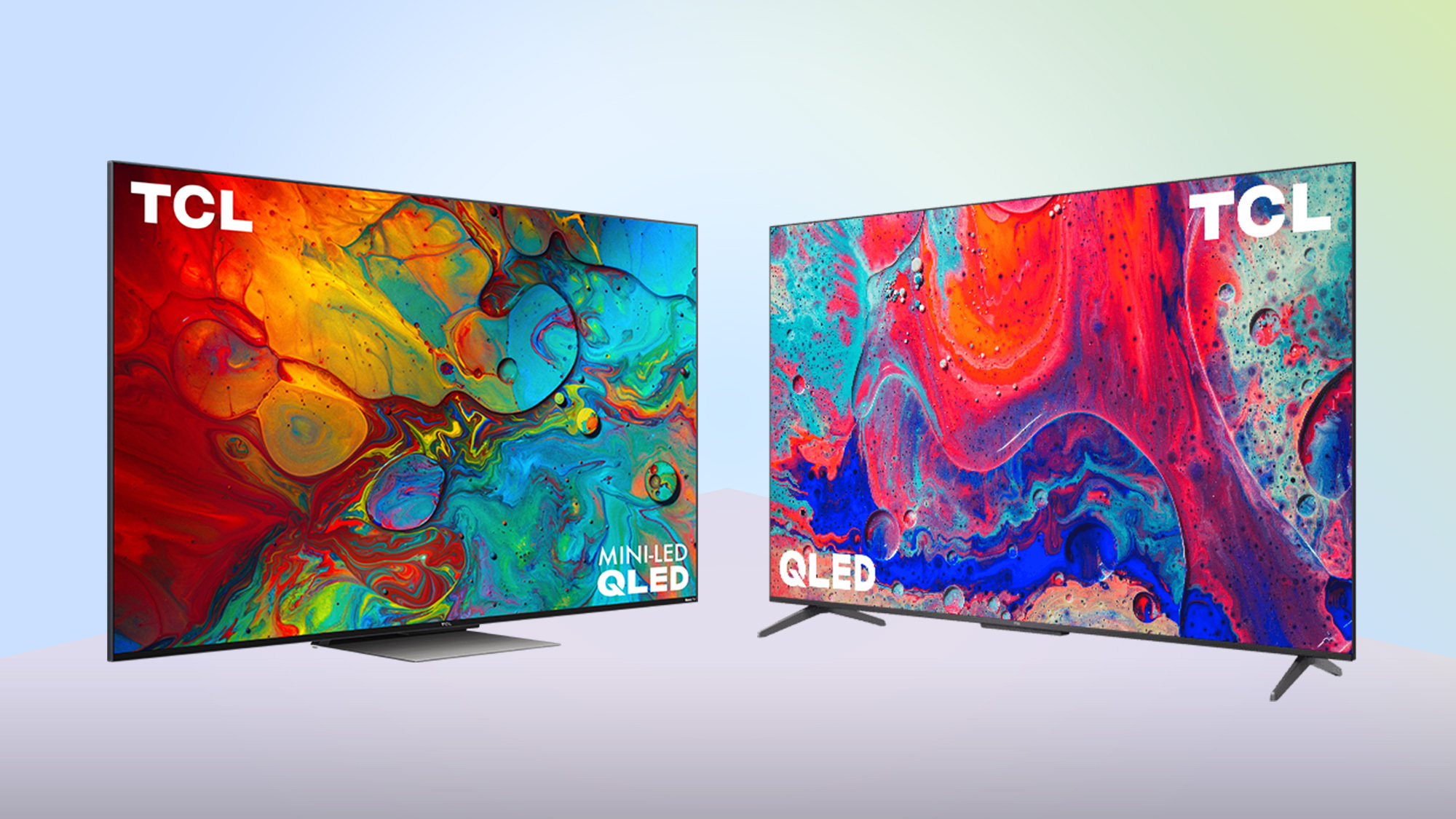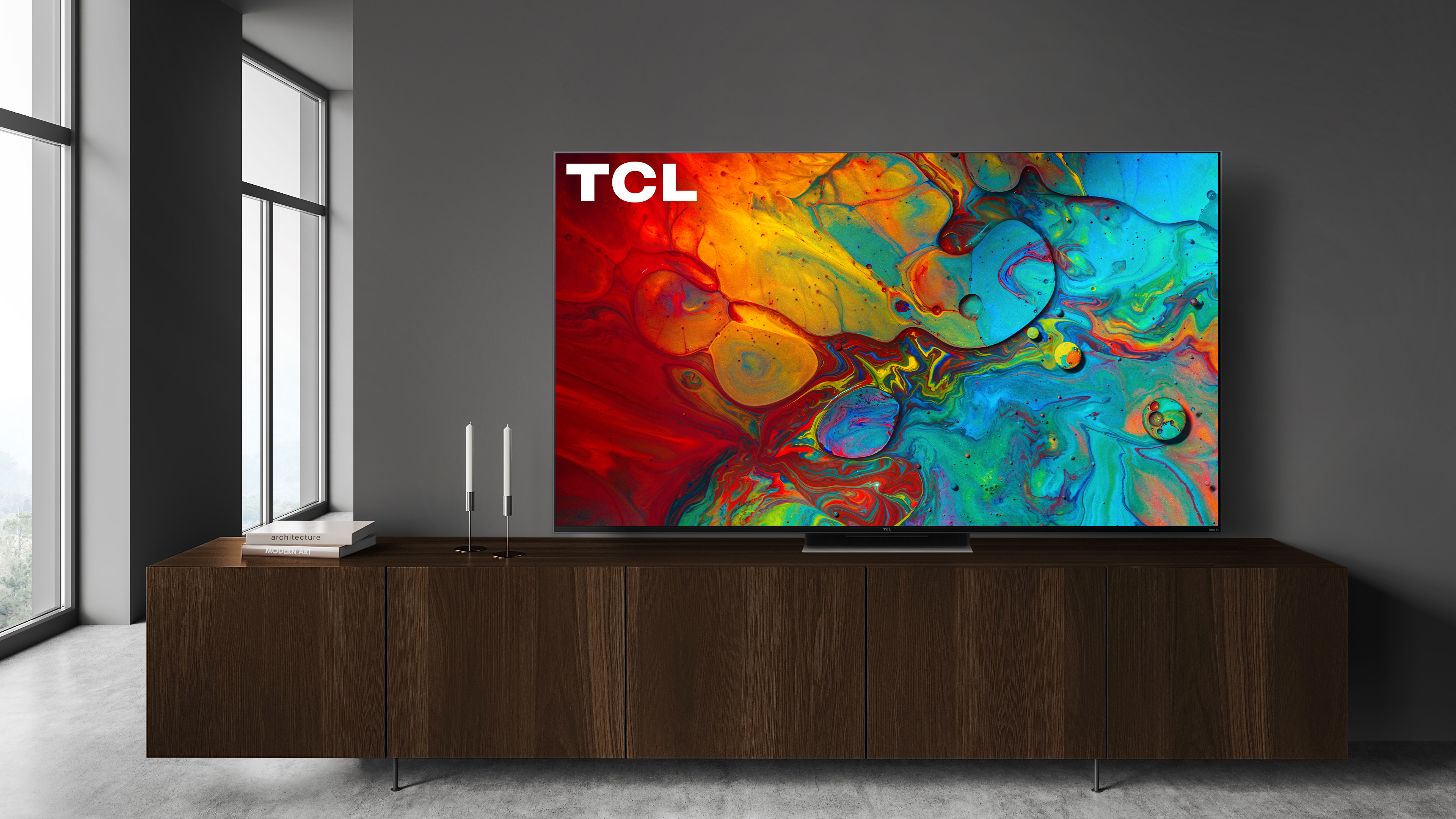
TCL may not have the vaunted history here in the US that companies like Sony and Samsung have, but the Chinese TV maker has made its presence known these last few years by offering some of the best mid-range TVs: the TCL 6-Series and the TCL 5-Series.
While these two TVs are only one number apart from one another, there’s a significant difference in price, performance and feature set between them. And while it’s tempting to just pick the less expensive of the two (the 5-Series) you could be missing out on key features that would’ve made movie night that much better.
Whether you’re a gamer looking for the best gaming TV, or a binge-watcher looking for a TV with Dolby Vision and Atmos support, the 5-Series and 6-Series have what you’re looking for…just to varying degrees.
Need help sorting out the differences? We’ve got you covered.
TCL 6-Series vs 5-Series: Panel technology
For years, the TCL 6-Series and 5-Series had the same panel type: both were LED-LCD TVs. Then, things began to change three years ago when the 6-Series started to move ahead in technology, leaving the 5-Series in the dust.
For this year’s models — the 6-Series R655 and the 5-Series S546 — the former uses MiniLED while the latter uses LED-LCD with a quantum dot filter, more commonly known as QLED. QLED is still a great technology as it offers enhanced color saturation and contrast over basic LED-LCD screens, MiniLED is a far more powerful technology.
To wit, MiniLED offers immaculate contrast — as smaller LEDs allow the TV to have more control over which parts of the screen are dark and which are bright. MiniLED clusters also produce a higher peak brightness (great if you have a lot of ambient light in your living room), too.
Get instant access to breaking news, the hottest reviews, great deals and helpful tips.
In short, the 5-Series with QLED is a step above other basic LED-LCD TVs you might be looking at, but the MiniLED panel makes the 6-Series a stronger performer in specs like overall brightness and contrast, and can also prevent haloing.
TCL 6-Series vs 5-Series: Contrast control zones

Speaking of contrast, the 6-Series has six times more contrast control zones than the 5-Series — up to 360 on the 6-Series vs 60 on the TCL 5-Series.
Contrast control zones, as the name suggests, allows a TV to have even finer control of which parts of the TV are turned on and off. Say, for example, you have a night sky in the background with something bright — like the Moon — in one small section. Instead of a TV turning on 10% of the LEDs to illuminate that one section of sky where the moon is, the additional contrast control zones would allow you to use the exact area where the moon is.
Having more zones on is a bad thing, as that’s what creates a greyish look to night skies and space scenes rather than true black.
TCL 6-Series vs 5-Series: Refresh rate
If you’re a gamer or sports lover, you definitely want to read this section. The headline here is that the TCL 6-Series not only has a native refresh rate of 120Hz, but it can go up to 144Hz when connected to a PC. For comparison, the 5-Series is limited to 60Hz.
While there’s a lot happening under the hood, a panel’s native refresh rate is the number of time all the pixels on the screen can refresh in one second. A 60Hz screen can therefore refresh the image on-screen 60 times in one second while a 120Hz or 144Hz display can refresh the image 120 times or 144 times in one second, respectively.
So why is this important for gamers? Well, if you have a new console like the Xbox Series X or PS5 and want to take advantage of their native 120 frames-per-second output, you’ll need a 120Hz TV. The 6-Series also supports VRR and AMD FreeSync, which is great for PC gamers.
TCL 6-Series vs 5-Series: Screen sizes

What we really like about TCL is that it tries to accommodate a lot of buyers — there’s people who want a second screen for a guest bedroom or basement, college students who need something for their dorm rooms or apartments, and people who want a new TV for the center of their living room. Between the 6-Series and the 5-Series, there should be a screen size that works for you.
That being said, the 5-Series is available in the smallest size between the two and starts at a 50-inch screen size. Besides a 50-inch model, there’s a 55-, 65- and 75-inch model, too.
The 6-Series is only available in a few sizes — 55-, 65- and 75-inches — but there’s also a newly announced 85-inch model that will be available in late 2022.
Basically, if you want a bigger screen, the 6-Series’ 85-inch is a good option but if you want something smaller than the standard 55- and 65-inch sizes, you’ll need to go for the 5-Series’ 50-inch model.
TCL 6-Series vs 5-Series: Price
While sussing out the difference between the specs can be tricky, take one look at the price and you’ll clearly see that the TCL 5-Series is the cheaper option: starting at just $399 for the 50-inch 50S546, the 5-Series is an absolute steal for the price.
At every size throughout the ranges, the 5-Series is cheaper than the 6-Series. The 55-inch 5-Series is $419 compared to the $699 55-inch 6-Series. The 65-inch 5-Series is $549 compared to the $999 TCL 6-Series. You can see the pattern here.
The only screen size not available for the 5-Series is the new 85-inch 6-Series model that will come in at $1,999. That's a fairly good price for an 85-inch screen, but again, it's significantly more than the $899 you'd spend on the 75-inch 5-Series.
Those prices will typically come down during peak shopping season — on or around Black Friday and Cyber Monday — so be sure to keep checking if you have your heart set on the 6-Series.
TCL 6-Series vs 5-Series: Verdict
If you don’t mind a lower peak brightness because there’s not a lot of ambient light in your room and you don’t have a next-gen console like the Xbox Series X or PS5, then you can save a lot of money by buying the TCL 5-Series. That’s especially true if you only want a 50-inch screen — something that the 5-Series has that the 6-Series does not.
However, if you’re looking for the experience of a flagship TV — like a Samsung S95B OLED or an LG C2 OLED — at a more reasonable price without skimping on features, the TCL 6-Series is the TV you want to go for. It’s the pricier of the two TVs, sure, but for serious cinephiles and avid gamers, it’s the TV we’d recommend.

Nick Pino heads up the TV and AV verticals at Tom's Guide and covers everything from OLED TVs to the latest wireless headphones. He was formerly the Senior Editor, TV and AV at TechRadar (Tom's Guide's sister site) and has previously written for GamesRadar, Official Xbox Magazine, PC Gamer and other outlets over the last decade. Not sure which TV you should buy? Drop him an email or tweet him on Twitter and he can help you out.
